
JOURNAL OF THE TEXTILE INSTITUTE
metrics 2024
Connecting academia and industry through textile excellence.
Introduction
The Journal of the Textile Institute, published by Taylor & Francis Ltd, is a renowned academic journal that has been pivotal in advancing research and innovation in the textile industry since its inception in 1967. With a robust ISSN of 0040-5000 and an E-ISSN of 1754-2340, this journal serves as a vital resource for researchers, practitioners, and students interested in the multifaceted aspects of textiles, encompassing agricultural and biological sciences, industrial engineering, and materials science. With a respectable impact factor reflected in its Q2 quartile rankings in the 2023 categories of Agricultural and Biological Sciences, Industrial and Manufacturing Engineering, and Polymers and Plastics, the journal stands out in the academic landscape—offering high-quality, peer-reviewed articles that foster knowledge exchange and innovation. Researchers and professionals alike will find this journal's commitment to exploring contemporary challenges and technological advancements ultimately invaluable for both academic inquiries and practical applications in the textile field.
Metrics 2024
 0.39
0.39 1.50
1.50 1.80
1.80 57
57Metrics History
Rank 2024
Scopus
IF (Web Of Science)
JCI (Web Of Science)
Quartile History
Similar Journals

Tekstil ve Konfeksiyon
Transforming Ideas into Practical Applications in TextilesTekstil ve Konfeksiyon, a distinguished journal published by the E.U. Printing and Publishing House, serves as a vital resource in the fields of Industrial and Manufacturing Engineering as well as Materials Science. With an ISSN of 1300-3356, this Turkish journal has witnessed significant development since its inception in 2008, continuing to contribute valuable insights and advancements through 2024. Although categorized in the third quartile (Q3) for Industrial and Manufacturing Engineering and the fourth quartile (Q4) for Materials Science, the journal ranks respectably within its fields—249th out of 384 and 357th out of 463, respectively, according to Scopus. Researchers, professionals, and students can gain access to a variety of cutting-edge studies and applications that reflect the latest trends and innovations in textile and apparel technology. The journal emphasizes the importance of practical applications and interdisciplinary research, fostering a platform for knowledge exchange and development aimed at pushing the boundaries of textile and clothing sciences.
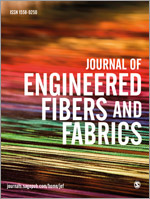
Journal of Engineered Fibers and Fabrics
Advancing the Future of Textile Innovation.The Journal of Engineered Fibers and Fabrics, published by SAGE Publications Ltd, serves as a leading platform in the field of Materials Science, providing vital insights and innovations in engineered fibers and textile technology. Established in 2009, this Open Access journal has been at the forefront of disseminating research aimed at advancing the science and application of fibrous materials, with the potential to impact industries such as fashion, automotive, and healthcare. With an impressive Q2 ranking in the 2023 Materials Science category and a solid percentile standing of 59th in general materials science rankings on Scopus, the journal is recognized for its rigorous peer-reviewed content. It addresses the latest developments and challenges in fabric engineering, enabling researchers, professionals, and students to stay abreast of pioneering discoveries and practical applications. To further enhance accessibility and encourage collaboration, the journal has been fully open-access since 2019, allowing a broader audience to benefit from its published research. The journal's commitment to advancing knowledge in this niche area makes it an invaluable resource for those involved in materials research and applications.

WAFFEN-UND KOSTUMKUNDE
Investigating the Threads of History and IdentityWAFFEN-UND KOSTUMKUNDE is a distinguished journal published by VERLAGSHAUS WERNER HOFMANN KG, focusing on the intricate study of arms and costumes within the realms of visual arts and cultural history. With its ISSN 0042-9945, this journal provides a unique interdisciplinary platform dedicated to the exploration of textile and weapon narratives, reflecting on their historical and social significance. Although it has discontinued its coverage in Scopus as of 2017, it maintains a dedicated readership within the arts and humanities community, ranking #372 out of 470 in its category with a 20th percentile. The journal aims to inspire scholarly discourse by publishing innovative research and critical analyses that deepen our understanding of material culture. Interested readers and contributors can explore a wealth of insights through its archives and ongoing contributions from experts in the field, based in Sonnefeld, Germany.
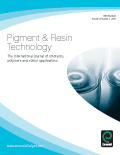
Pigment & Resin Technology
Connecting Science and Industry through Materials InnovationPigment & Resin Technology is an esteemed journal published by Emerald Group Publishing Ltd, focusing on the interdisciplinary fields of materials chemistry and coatings science. With a history spanning from 1972 to 2024, the journal serves as a vital platform for disseminating innovative research and developments concerning pigments, resins, and related materials technologies. Holding a respectable position in the Q3 category for both Materials Chemistry and Surfaces, Coatings, and Films as of 2023, it ranks within the 40th percentile among its peers, underscoring its relevance and impact within these domains. Although it does not currently offer open access, the journal remains a key resource for researchers, professionals, and students aiming to stay abreast of cutting-edge findings and practical applications in materials science. As such, Pigment & Resin Technology is essential reading for those engaged in the innovation and application of advanced materials in various industries.
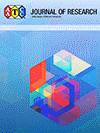
AATCC Journal of Research
Shaping tomorrow's materials with today's research.AATCC Journal of Research is an esteemed publication at the forefront of materials science, focusing on the latest advancements in the fields of materials chemistry, polymers and plastics, and process chemistry and technology. Published by SAGE Publications Inc. in the United States, the journal disseminates high-quality research that shapes the future of textile and materials innovation through rigorous peer-reviewed studies. With a notable impact factor indicative of its scholarly influence, AATCC Journal of Research stands out in the Q3 quartile rankings across its categories for 2023, making it a significant platform for emerging research and technological advancements. The journal's commitment to excellence is reflected in its extensive coverage from 2014 to 2024, and it is an essential resource for researchers, professionals, and students aiming to stay abreast of the latest trends and technologies in the materials science domain. While it operates under a traditional access model, the potential for pioneering knowledge exchange remains paramount, further solidifying its role in the academic and professional communities.

FIBRES & TEXTILES IN EASTERN EUROPE
Fostering Collaboration in Fibres and Textile ResearchFIBRES & TEXTILES IN EASTERN EUROPE, published by the Lukasiewicz Research Network - Lodz Institute of Technology, is a prominent academic journal dedicated to advancing knowledge in the fields of materials science, engineering, and environmental research within the textile industries of Eastern Europe. Since its inception in 1993, this journal has become a vital resource for researchers, professionals, and students alike, focusing on the latest innovations and trends in fiber and textile technology. With an impressive classification of Q3 in several categories, including Business and International Management, Environmental Science, and Industrial Manufacturing Engineering, it aims to bridge the gap between research and practical application. Although it is an open-access journal, readers can easily access valuable insights and findings that are crucial for both academic and industrial stakeholders. As global sustainability and material efficiency become increasingly pressing issues, FIBRES & TEXTILES IN EASTERN EUROPE plays an essential role in disseminating research that addresses these challenges while promoting collaboration across diverse disciplines.
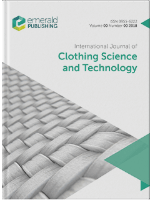
International Journal of Clothing Science and Technology
Bridging Research and Application in Clothing Science.International Journal of Clothing Science and Technology, published by Emerald Group Publishing Ltd, is a leading academic journal dedicated to advancing the field of clothing science and technology. With a commitment to high-quality research since its inception in 1989, this journal effectively bridges the gap between innovation and application within the realms of textiles, fashion, and related materials science. The journal holds a respectable Q3 ranking across several categories, including Business, Management and Accounting (miscellaneous) and Materials Science, emphasizing its relevance in both industry and academia. Although it is not Open Access, the journal nonetheless provides critical insights and findings that are essential for researchers, professionals, and students aiming to navigate the complex world of clothing technology. From sustainable practices to new fabric technologies, the International Journal of Clothing Science and Technology remains a vital resource, equipping its readers with the latest knowledge to drive progress in this dynamic field.

Fornvannen-Journal of Swedish Antiquarian Research
Elevating the Study of Antiquities with Scholarly RigorFornvannen - Journal of Swedish Antiquarian Research is a distinguished peer-reviewed journal dedicated to advancing the field of antiquarian studies through rigorous research and scholarship. Published by the Royal Academy Letters, History & Antiquities in Sweden, this journal has been a cornerstone of archaeological and historical discourse since its inception in 1978. It currently holds an esteemed position in the Q3 category in both Archaeology and History as per the 2023 assessments, reflecting its commitment to promoting high-quality academic contributions. With an ISSN of 0015-7813 and an E-ISSN of 1404-9430, Fornvannen provides insights into Swedish antiquities and serves as a vital resource for researchers and scholars eager to explore the nuances of archaeological and historical findings. Although not an open-access journal, it offers a comprehensive platform for the dissemination of knowledge within the fields of arts and humanities. As it continues its journey from 2011 to 2024, Fornvannen remains pivotal in fostering scholarly dialogue and enhancing our understanding of Sweden’s rich historical tapestry.

FIBRE CHEMISTRY
Exploring the Future of Fibre Technology and Materials Science.Fibre Chemistry is an esteemed journal published by Springer, focusing on the intricate and evolving field of polymer science and textile engineering. With its ISSN 0015-0541 and E-ISSN 1573-8493, this journal serves as a pivotal resource for researchers, practitioners, and students, highlighting significant advancements and innovations in fibre technology since its inception in 1969. Despite its current positioning in the Q3 quartile across Chemical Engineering, Chemistry, and Materials Science categories, Fibre Chemistry continually aims to bridge the gap between fundamental science and practical application by disseminating high-quality, peer-reviewed research articles. The journal does not currently operate under an open access model, but it provides crucial insights that foster collaboration and drive progress within its field. With the ongoing convergence of technologies and materials, this publication is poised to contribute significantly to the academic discourse surrounding fibre chemistry and its related disciplines until 2024 and beyond.
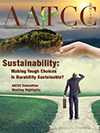
AATCC REVIEW
Empowering researchers to shape the future of textile chemistry.AATCC REVIEW is a distinguished journal published by the American Association of Textile Chemists and Colorists (AATCC), focusing on the interdisciplinary fields of textile chemistry, material sciences, and engineering. With an ISSN of 1532-8813, this journal serves as a vital platform for researchers and professionals engaged in the latest advancements and innovative practices within the textile industry. Despite its Q4 rankings in the 2023 category quartiles for Chemical Engineering, Chemistry, and Materials Science, AATCC REVIEW remains committed to enhancing its academic contributions and bolstering knowledge-sharing within its community. The journal, which has transitioned to a view title change in open access, enables a wider dissemination of research findings, thus supporting the global textile community in addressing contemporary challenges. With a coverage period from 2001 to 2020 and its U.S. base situated in Research Triangle Park, North Carolina, the journal plays a significant role in bridging the gap between academia and industry, making it an essential resource for students, researchers, and industry professionals alike.